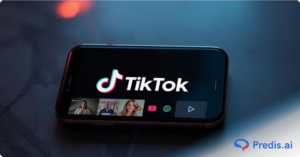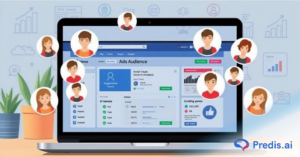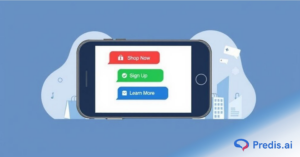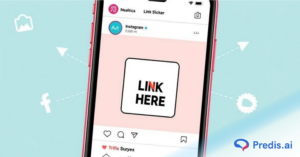Every eCommerce store has experienced the frustration of cart abandonment—when shoppers add items to their cart but leave without completing the purchase. It’s more common than you might think. The average cart abandonment rate hovers around 70%, representing a massive chunk of potential revenue slipping through the cracks.
But here’s the good news: cart abandonment isn’t the end of the customer journey. It’s an opportunity. With the right strategy, brands can recover lost sales by reconnecting with these high-intent shoppers, often at a fraction of the cost of acquiring new customers.
That’s where Facebook retargeting comes into play.
Facebook’s advanced ad platform allows you to serve personalized, timely ads to users who abandoned their carts, nudging them back to your site with the right message at the right time. Whether it’s through dynamic product ads, limited-time offers, or simple reminders, retargeting abandoned carts with Facebook Ads is one of the most powerful tactics in any eCommerce marketer’s toolkit.
In this guide, we’ll walk you through everything you need to know about retargeting cart abandoners on Facebook, including:
- Why Facebook Ads work so well for cart recovery
- How to set up and optimize your retargeting campaigns
- Best practices to increase conversions
- Tools and tips to make the process easier and more effective
Let’s dive in and turn those abandoned carts into recovered revenue.
What is Cart Abandonment and Why Does It Matter?
Cart abandonment occurs when a customer adds items to their online shopping cart but exits the site without completing the purchase. It’s one of the most pressing challenges in eCommerce today, affecting businesses of every size.
Why Do Shoppers Abandon Their Carts?
There are several reasons behind this customer journey interruption, including:
- Unexpected shipping costs or taxes at checkout
- Complex or time-consuming checkout processes
- Mandatory account creation before purchase
- Lack of trust or payment security concerns
- Simply browsing or comparison shopping
- Mobile distractions or technical glitches
These interruptions not only disrupt the buying journey but also contribute to significant revenue loss.
Abandoned Cart Stats That Reveal the Problem
According to Hotjar, industry reports, the average cart abandonment rate hovers around 70%, meaning 7 out of 10 potential buyers leave before checking out. For mobile users, the rate can spike even higher. This translates to trillions of dollars in lost revenue annually across global eCommerce.
But these aren’t just lost sales, they’re recoverable opportunities.
Why Timely Cart Recovery is Critical
The longer you wait to re-engage a shopper, the less likely they are to return. Research shows that the best window to convert an abandoner is within the first 1–3 hours after they leave your site. That’s why retargeting abandoned carts with Facebook Ads is such a powerful strategy—it enables brands to reach users where they’re already active, with timely, personalized reminders.
Setting Up Your Facebook Pixel for Cart Retargeting
Before you can start retargeting abandoned carts with Facebook Ads, you need to ensure that you’re tracking user behavior accurately, and that starts with setting up the Facebook Pixel.
The Facebook Pixel is a small piece of code that you add to your website. It helps you track cart activity, measure conversions, build retargeting audiences, and serve dynamic ads that are highly relevant to each user’s behavior.
Step-by-Step: Installing and Verifying Facebook Pixel
Let’s give you an easy step-by-step understanding.

- Create Your Pixel in Meta Events Manager
- Go to Meta Events Manager and click “Connect Data Sources > Web”.
- Choose Facebook Pixel, name it, and enter your website URL.
- Go to Meta Events Manager and click “Connect Data Sources > Web”.
- Install the Pixel Code on Your Website
- If you’re using platforms like Shopify, WooCommerce, or BigCommerce, you can integrate the Pixel without editing code.
- For manual installation, paste the Pixel base code in the <head> tag of your website’s pages.
- If you’re using platforms like Shopify, WooCommerce, or BigCommerce, you can integrate the Pixel without editing code.
- Verify Your Pixel Installation
- Use the Meta Pixel Helper Chrome extension to check if your Pixel is firing correctly.
- Visit your site, add an item to the cart, and ensure the Pixel tracks the action.
- Use the Meta Pixel Helper Chrome extension to check if your Pixel is firing correctly.
Setting Up Custom Events for Cart Activity
To track cart activity and build accurate retargeting segments, you need to go beyond basic tracking and configure custom events:
- ViewContent – Triggers when someone views a product page
- AddToCart – Triggers when an item is added to the cart
- InitiateCheckout – Triggers when the user begins the checkout process
- Purchase – Triggers on the order confirmation page
These events allow Facebook to segment users based on their journey, enabling more targeted and relevant ads.
To set these up:
- Use Facebook’s Event Setup Tool (no coding required)
- Or, implement the code snippets manually into the relevant page templates
Testing and Troubleshooting Pixel Setup
A small misconfiguration can throw off your entire conversion tracking strategy. Here’s how to catch errors early:

- Use Meta Pixel Helper to check which events are firing
- In Events Manager, go to the “Test Events” tab and walk through your site as a user
- Make sure there are no duplicate events or missing parameters
- Use the Diagnostics tab to resolve common issues flagged by Facebook
The Importance of Accurate Tracking for Retargeting
If your Pixel isn’t working correctly, your retargeting campaigns won’t either.
Accurate event tracking is the foundation of effective Facebook retargeting. It ensures:
- You only target users who actually added to the cart but didn’t purchase
- Your dynamic product ads display the exact items each user viewed
- Your ad spend is focused on high-intent users
- You can track and optimize conversions with confidence
Creating a Retargeting Audience for Abandoned Carts on Facebook
Once your Facebook Pixel is properly set up, the next crucial step in retargeting abandoned carts with Facebook Ads is building the right audience. By leveraging Custom Audiences in Meta Ads Manager, you can directly reach users who added items to their cart but didn’t complete the purchase—your warmest, highest-intent leads.
Using Custom Audiences in Facebook Ads Manager
To start, head to Meta Ads Manager and navigate to the Audiences tab. Select “Create Audience” > “Custom Audience” and choose the source “Website.”

From there, you can filter website visitors based on specific behaviors tracked by your Facebook Pixel.
For abandoned cart retargeting, create a Custom Audience of users who:
- Triggered the AddToCart event
- Did not trigger the Purchase event
Segmenting Users: Cart Viewers vs. Cart Abandoners
Not all site visitors should be treated equally. For more precise targeting, segment your audience further:
- Cart Viewers – Users who landed on the cart page but didn’t add a product
- Cart Abandoners – Users who added items to the cart (AddToCart) but didn’t purchase
- Checkout Abandoners – Users who initiated checkout but didn’t complete the Purchase
Lookalike Audiences for Broader Reach
Once your abandoned cart audience is generating results, consider scaling your reach by creating a Lookalike Audience based on it.
Facebook’s algorithm will identify users with similar behaviors, interests, and demographics, allowing you to target cold audiences that resemble your best prospects.
This is an ideal way to grow your funnel while still staying aligned with your remarketing strategy—targeting users who are statistically more likely to convert.
Audience Duration Window Best Practices
When setting up your Custom Audience, Facebook lets you define how far back the user action occurred—this is known as the audience duration window.
Here’s what works best:
- 1–3 Days: High urgency, best for offering immediate incentives
- 4–10 Days: Ideal for reminder-style ads
- 11–30 Days: For longer consideration cycles and re-engagement campaigns
Best Practices for Retargeting Abandoned Carts with Facebook Ads
To recover lost sales and make the most of your ad spend, you need to combine smart targeting with conversion-focused ads that resonate with users.
Here are the proven best practices to boost performance and ROI when retargeting abandoned carts with Facebook Ads.
Creative Ideas: Use of Urgency, Testimonials, and Discount Codes
High-performing retargeting ad creatives tap into user psychology. Since you’re dealing with warm leads, your goal is to give them the final push.

Incorporate these conversion triggers into your creative:
- Urgency Messaging: Phrases like “Only a few left,” “Sale ends tonight,” or “Don’t let it sell out” prompt immediate action.
- Social Proof: Include customer testimonials, star ratings, or user-generated content to build trust and reduce hesitation.
- Discount Codes: Offer a limited-time discount or free shipping code to incentivize returning and completing the purchase.
A/B Testing Visuals, CTAs, and Messaging
Don’t guess—test.
Facebook makes it easy to run A/B tests to compare ad variations. Test different:
- Images vs. videos
- Headline copy and value props
- Call-to-action buttons (e.g., Shop Now, Complete Your Order, Get My Discount)
- Ad formats like carousel vs. single image
Frequency and Timing: When to Show Your Ad
Timing is everything in cart recovery. You want to appear soon enough to stay relevant—but not so often that it becomes spammy.
Best practices for ad frequency and timing:
- Show ads within 1–3 hours of abandonment to capture fresh intent
- Continue showing ads for up to 7–14 days, depending on your product lifecycle
- Limit frequency to 1–2 impressions per day to avoid ad fatigue
- Use sequential messaging: Start with a reminder, then offer a discount or incentive later in the sequence
Mobile-First Creatives for Better Performance
Over 80% of Facebook users access the platform on mobile devices. That’s why all your retargeting ad creatives should be mobile-optimized.
Tips for high-performing mobile-first ads:
- Use vertical or square formats for better screen fit
- Keep text short and punchy—users scroll fast
- Include clear, tappable CTAs
- Ensure product images are high-resolution and quick-loading
Retargeting Abandoned Carts with Facebook Dynamic Product Ads
One of the most effective tools for retargeting abandoned carts with Facebook Ads is the Dynamic Product Ad (DPA). Instead of serving generic reminders, Facebook DPAs deliver highly personalized ads that showcase the exact products a user left behind—making the message more relevant and conversion-focused.
What Are Dynamic Product Ads (DPAs)?
Facebook Dynamic Product Ads are automated, behavior-triggered ad formats that pull data directly from your eCommerce product catalog. They display specific items each shopper viewed, added to cart, or purchased, dynamically adjusting the content based on individual user behavior.
Benefits of Using DPAs for Abandoned Cart Recovery
In the context of an abandoned cart strategy, Facebook DPAs offer several key advantages:
- Highly Personalized Ads: Show users the exact items they abandoned, increasing relevance and intent to purchase.
- Automated Optimization: Facebook continuously learns which products and messaging perform best.
- Scalability: One dynamic template can serve hundreds or thousands of products without creating separate ads for each.
- Cross-Device Consistency: Reconnect with users across desktop and mobile, wherever they left off.
Setting Up DPAs for Personalized Retargeting
To run Facebook DPAs, follow these steps:
- Install Facebook Pixel
Ensure it’s tracking key events like ViewContent, AddToCart, and Purchase. - Create a Product Catalog
This is a structured data feed containing product names, images, prices, and URLs. You can create it manually, use your eCommerce platform’s native integration (like Shopify or WooCommerce), or upload via Meta’s Commerce Manager. - Build a Product Set
Segment your catalog into specific categories, such as “Best Sellers” or “Men’s Shoes,” for more targeted ads. - Create a Catalog Sales Campaign in Meta Ads Manager
Select the Catalog Sales objective and connect it to your synced product feed. Define your audience as those who added to cart but didn’t purchase, and Facebook will do the rest.
Syncing Product Catalog with Meta
Syncing your product catalog with Meta ensures your DPA campaigns are always up-to-date. Here’s how to do it:
- Use Meta Commerce Manager to upload your product feed
- Set up automatic syncing (daily or hourly) using a data feed URL from your store
- Ensure your feed includes essential attributes: ID, name, description, availability, condition, price, image link, and product URL
- Validate your feed to avoid broken links or mismatched pricing
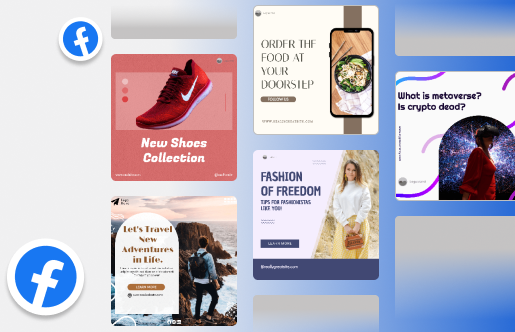
Measuring the Success of Your Facebook Cart Retargeting Campaigns
Let’s explore how to analyze your campaigns effectively using Facebook ads analytics, which ad performance metrics matter most, and how to optimize based on real insights.
Key KPIs to Track: ROAS, CTR, CPA, and Conversion Rate
To determine if your abandoned cart strategy is paying off, start with these core performance indicators:
- ROAS (Return on Ad Spend): This is your ultimate profitability metric. A high ROAS indicates that your ad spend is converting into meaningful revenue.
- CTR (Click-Through Rate): Measures how compelling your ad is—higher CTR often means your creative and offer are resonating.
- CPA (Cost Per Acquisition): Tells you how much you’re spending to recover each sale. Keeping this low ensures efficiency.
- Conversion Rate: This shows what percentage of users who clicked your ad actually completed a purchase—essential for evaluating conversion-focused ads.
Using Meta Ads Reporting Dashboard
Meta (Facebook) provides a powerful Ads Manager reporting dashboard where you can drill down into:
- Campaign-level and ad-set-level performance
- Breakdown by device, age, gender, and location
- Funnel stages (clicks, adds to cart, checkouts, purchases)
Customize your columns to include metrics like ROAS tracking, impressions, and cost per result. Also, use the Compare tool to evaluate performance over time or between A/B test variants.
Attribution Tips: Understanding Touchpoints
Understanding how and when users convert is key to interpreting your results accurately. Facebook uses different attribution windows—like 1-day click, 7-day click, or 1-day view—to track conversions.
Tips for better attribution:
- Use the 7-day click window to capture most mid-funnel purchases
- Consider multi-touch attribution in Google Analytics or Shopify for a full customer journey view
- Pay attention to the overlap between email, SMS, and Facebook retargeting campaigns to avoid double-counting
How to Improve Based on Insights
Once you have data in hand, here’s how to refine your retargeting abandoned carts with Facebook Ads campaign:
- Low CTR? Try testing new visuals, ad copy, or urgency-based offers.
- High CPA? Refine your audience segments—exclude past purchasers or set tighter retargeting windows.
- Poor ROAS? Consider offering a stronger incentive or improving your product page experience.
- Flat Conversion Rate? Revisit your landing page speed, checkout process, and mobile usability.
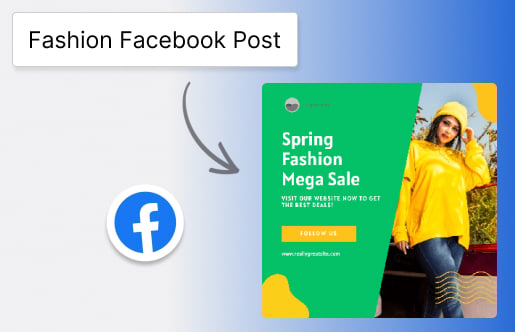
Boost Facebook Display Ads with Predis.ai
If you’re short on time or creative resources, Predis.ai can be your secret weapon for creating scroll-stopping Facebook display ads. This AI-powered tool helps you generate engaging ad visuals and copy in seconds, tailored specifically to your product, brand voice, and campaign goals.

Whether you’re retargeting abandoned carts or launching a new offer, Predis.ai simplifies the creative process by:
- Auto-generating image and video creatives from your product URLs
- Offering pre-tested ad copy templates optimized for Facebook’s algorithm
- Ensuring brand consistency with custom color palettes and fonts
- Helping you A/B test different variations with minimal effort
Conclusion
Cart abandonment is one of the biggest challenges facing eCommerce businesses today, with an average cart abandonment rate hovering around 70%. This represents a massive opportunity to recover lost sales and bridge the revenue gap through strategic remarketing.
Retargeting abandoned carts with Facebook Ads is a powerful way to reconnect with interested shoppers and guide them back to complete their purchases. By leveraging Facebook’s advanced targeting tools, dynamic product ads, and personalized creatives, you can turn missed opportunities into tangible revenue and improve your overall conversion rates.
If you’re ready to boost your eCommerce sales and maximize your ad spend, now is the perfect time to implement your first Facebook cart retargeting campaign. Start with clear tracking, smart audience segmentation, and compelling ad creatives that drive urgency and trust.
Take action now and transform abandoned carts into loyal customers with the power of retargeting abandoned carts with Facebook Ads.



